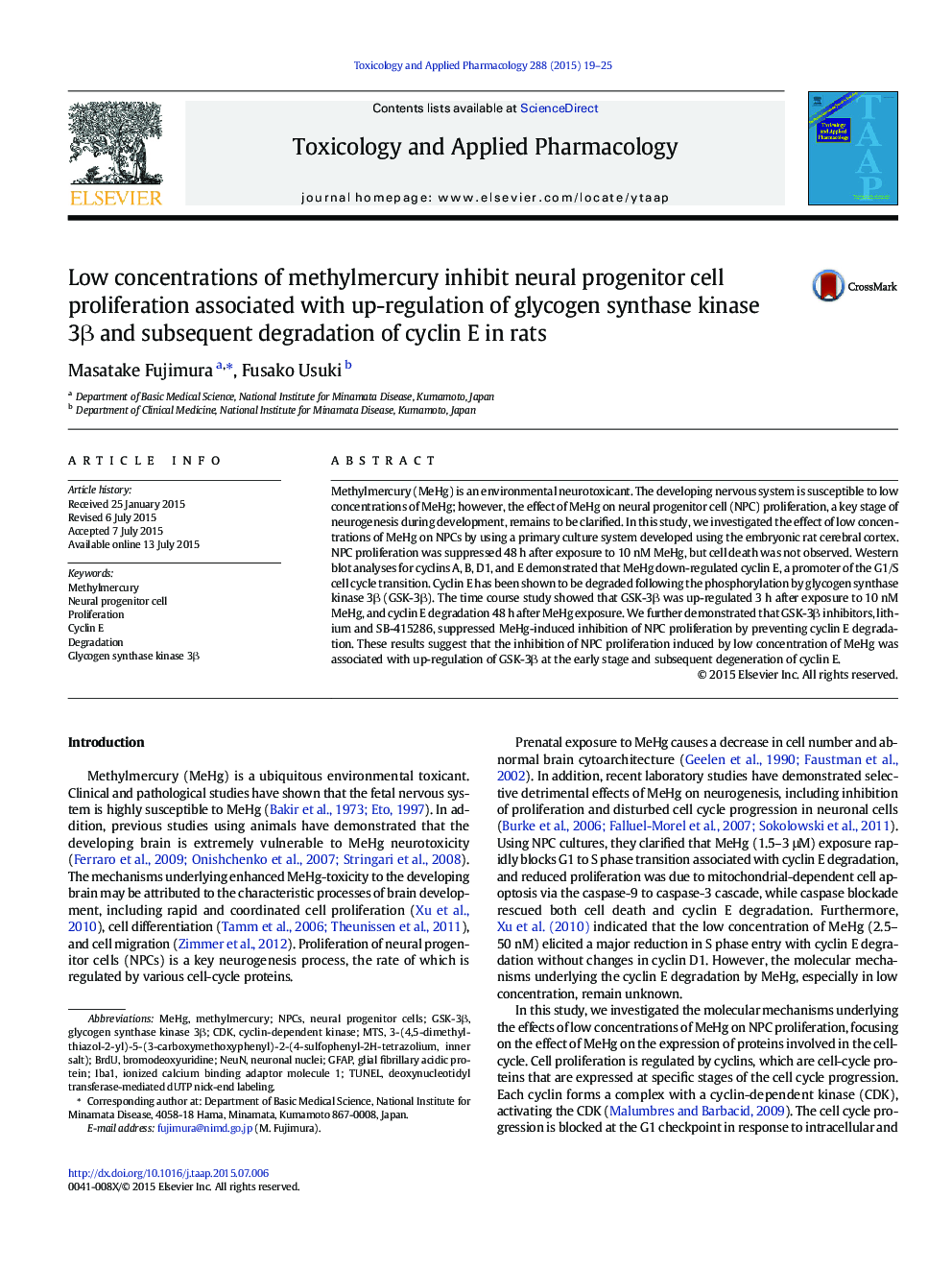| Article ID | Journal | Published Year | Pages | File Type |
|---|---|---|---|---|
| 2568297 | Toxicology and Applied Pharmacology | 2015 | 7 Pages |
•NPC proliferation was suppressed by 10 nM MeHg, but cell death was not observed.•MeHg induced down-regulation of cyclin E, a promoter of cell cycle progression.•GSK-3β was up-regulated by 10 nM MeHg, leading to cyclin E degradation.•GSK-3β inhibitors suppressed MeHg-induced degradation of cyclin E.
Methylmercury (MeHg) is an environmental neurotoxicant. The developing nervous system is susceptible to low concentrations of MeHg; however, the effect of MeHg on neural progenitor cell (NPC) proliferation, a key stage of neurogenesis during development, remains to be clarified. In this study, we investigated the effect of low concentrations of MeHg on NPCs by using a primary culture system developed using the embryonic rat cerebral cortex. NPC proliferation was suppressed 48 h after exposure to 10 nM MeHg, but cell death was not observed. Western blot analyses for cyclins A, B, D1, and E demonstrated that MeHg down-regulated cyclin E, a promoter of the G1/S cell cycle transition. Cyclin E has been shown to be degraded following the phosphorylation by glycogen synthase kinase 3β (GSK-3β). The time course study showed that GSK-3β was up-regulated 3 h after exposure to 10 nM MeHg, and cyclin E degradation 48 h after MeHg exposure. We further demonstrated that GSK-3β inhibitors, lithium and SB-415286, suppressed MeHg-induced inhibition of NPC proliferation by preventing cyclin E degradation. These results suggest that the inhibition of NPC proliferation induced by low concentration of MeHg was associated with up-regulation of GSK-3β at the early stage and subsequent degeneration of cyclin E.
